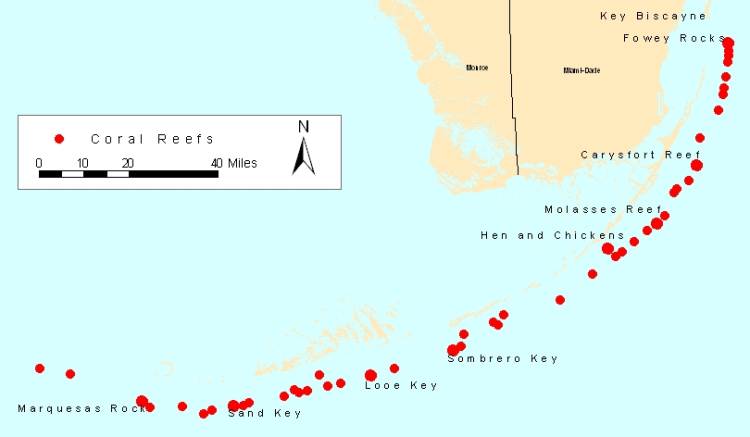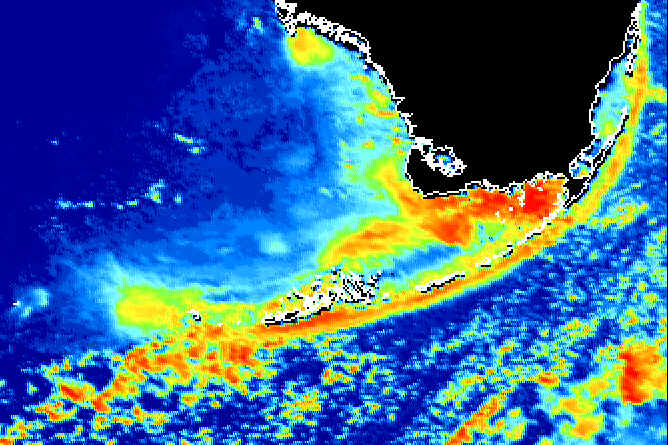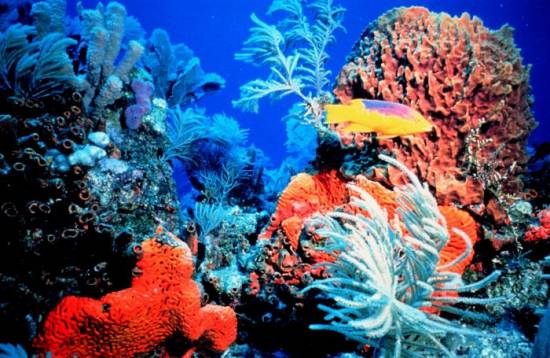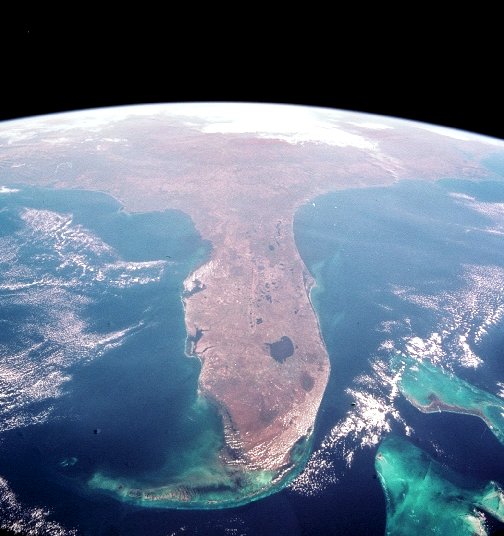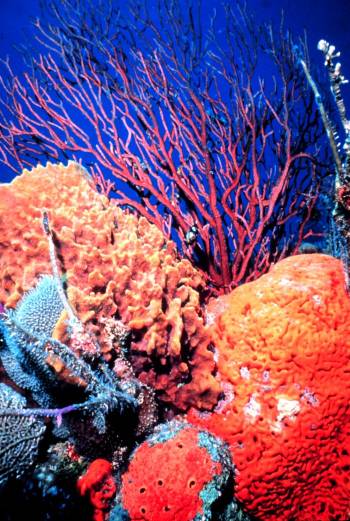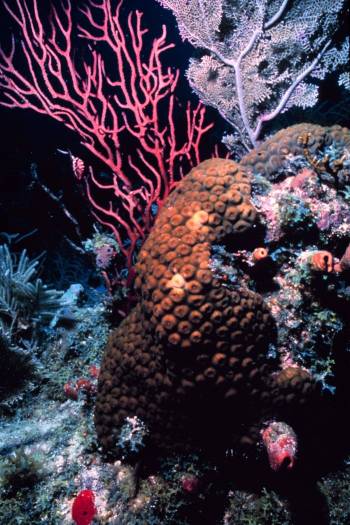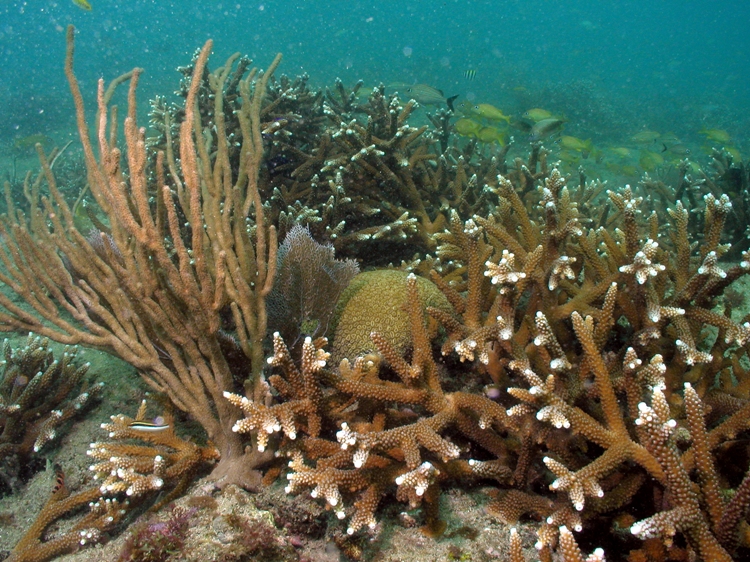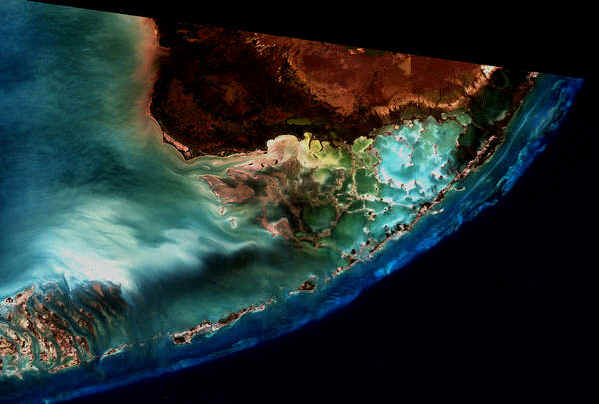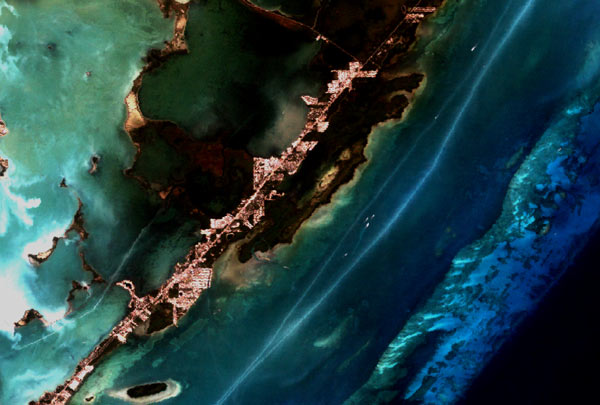
|
||||||||||||
|
|
|
Coral Reefs in The Florida Keys
Florida is the only state in the continental United States to have extensive shallow coral reef formations near its coasts. Coral reefs create specialized habitats that provide shelter, food and breeding sites for numerous plants and animals, including spiny lobster, snapper and other commercial and recreational species.
Coral reefs lay the foundation of a dynamic ecosystem with tremendous biodiversity. The Florida Reef Tract (FRT) stretches 358 miles from the Dry Tortugas National Park off of the Florida Keys to the St. Lucie Inlet in Martin County. Roughly two thirds of the Florida Reef Tract lies within the Florida Keys National Marine Sanctuary (FKNMS), a marine protected area that surrounds the Florida Keys island chain.
Imagery of Florida Coral Reefs -Department of Marine Science, University of South Florida
"Pollution, over fishing, and overuse have put many of our unique reefs at risk. Their disappearance would destroy the habitat of countless species. It would unravel the web of marine life that holds the potential for new chemicals, new medicines, unlocking new mysteries. It would have a devastating effect on the coastal communities from Cairns to Key West, Florida - communities whose livelihood depends upon the reefs." -Bill Clinton, Former President of the United States
Spanish hogfish at reef Credit: Florida Keys National Marine Sanctuary North America's only living coral barrier reef lies approximately six miles seaward of the Florida Keys in water that are typically fifteen to thirty feet deep. The reef tract starts near Miami and extends southwest to the Dry Tortugas, about sixty-seven miles west of Key West. Patch reefs continue up through the Palm Beaches.
Earth Sciences and Image Analysis Laboratory, NASA, Johnson Space Center The great coral reefs of the Florida Keys are the only true coral reefs in the continental waters of the United States.
Types of Reefs and CoralsThe three major types of coral reefs around the world are atolls, fringing reefs and barrier reefs. Florida's coral reef system most closely resembles a barrier reef, however, the reefs are closer to shore and they lack the shallow inshore lagoons found on most barrier reefs so it is more aptly named a bank reef. Florida also has patch reefs, which grow between the reef tract and the land in shallower waters. Patch reefs are typically small (the size of your back yard or a small home). More than 45 species of stony corals and 37 species of octocorals are found along the Florida Reef Tract. Each kind lives in a separate colony that is shaped differently. The colonies take on the various hues of the algae that live within them. Corals can generally be divided into two main categories: stony corals and octocorals (sea fans and other soft corals). Marine sponges are also very important within the coral reef community and over 70 species can be found along the Florida Reef Tract. Florida's most common reef-building corals are brain, star, elkhorn and staghorn. Brain coral is dome-shaped and has the waves, folds and ridges that resemble those of a human brain.
Star coral is also dome-shaped, but has a distinctive star pattern on its surface that is caused by the accordion-like folds within its polyp cups. Elkhorn and staghorn corals are so named because their branchlike projections resemble the antlers of those animals.
Image by Scientific Visualization Studio, NASA Goddard Space Flight Center; data courtesy Landsat Project The Florida Keys hosts several million snorkelers, divers, fisherman and boaters every year. So many people have become captivated by coral reefs that Florida is the number one dive destination in the world with ten times the number of the second highest rated diving area, Australia, an area of reef ten times larger. The coral reef is being destroyed by the sheer numbers of visitors.
A Landsat-7 image of a coral reef near Key Largo, Florida. Credit: NASA/GSFC
Designated on November 16, 1990, Florida Keys National Marine Sanctuary is one of 14 marine protected areas that make up the National Marine Sanctuary System. Administered by NOAA, a federal agency, and jointly managed with the State of Florida, Florida Keys National Marine Sanctuary protects 2,900 square nautical miles of waters surrounding the Florida Keys, from south of Miami westward to encompass the Dry Tortugas, excluding Dry Tortugas National Park. The shoreward boundary of the sanctuary is the mean high-water mark, essentially meaning that once you set foot in Keys waters, you have entered the sanctuary. Within the boundaries of the sanctuary lie spectacular, unique, and nationally significant marine resources, from the world’s third largest barrier reef, extensive seagrass beds, mangrove-fringed islands, and more than 6,000 species of marine life.
Reef Relief founders Craig and DeeVon Quirolo retired from the grassroots organization last July, only to begin an effort to provide an online resource on coral reefs. Their new website provides all the award-winning educational tools, grassroots strategies, project reports and images of coral reefs assembled during their work over the past 23 years in the Florida Keys and throughout the Caribbean protecting coral reefs. You can find it at www.reefrelieffounders.com
|

